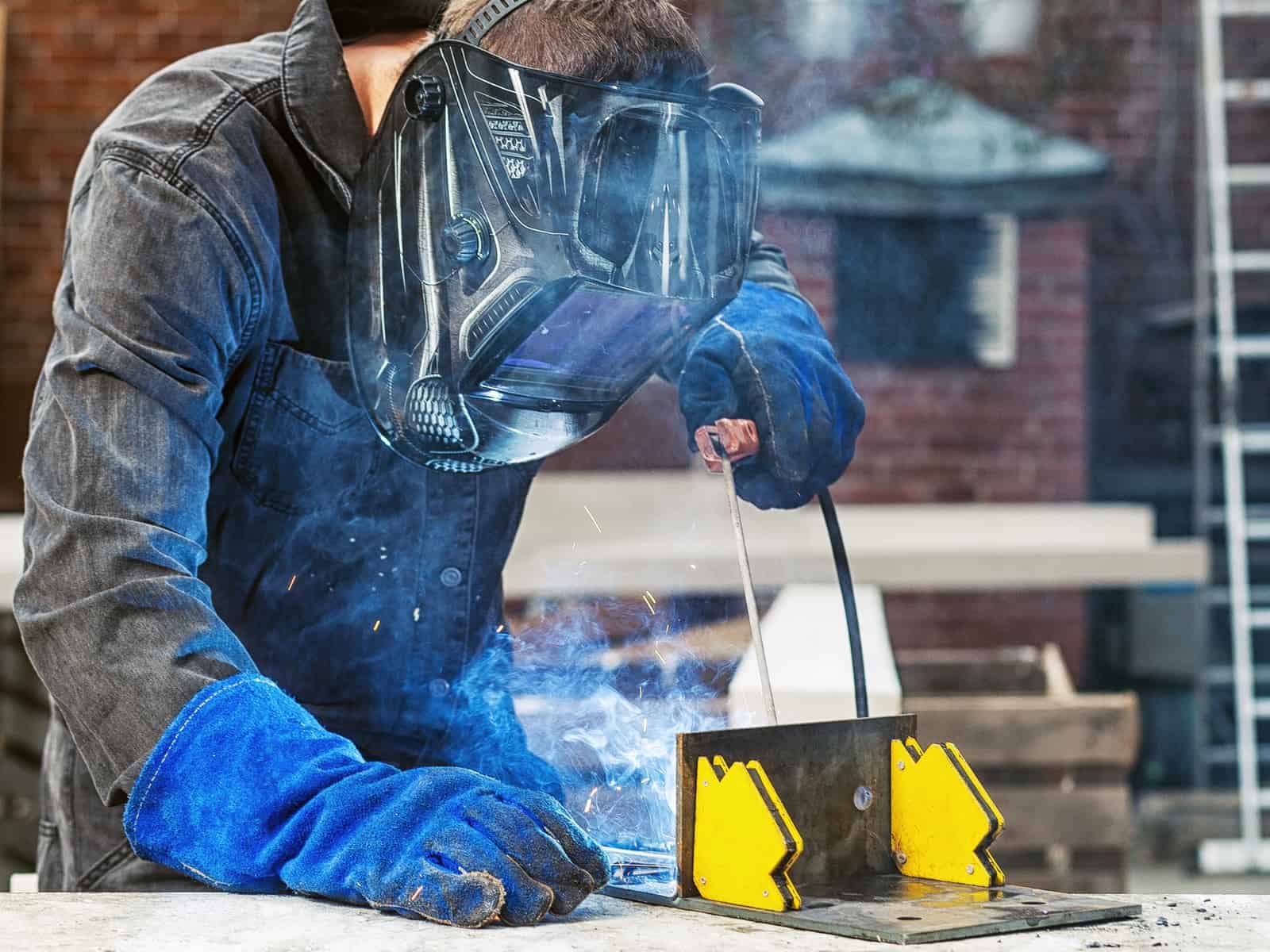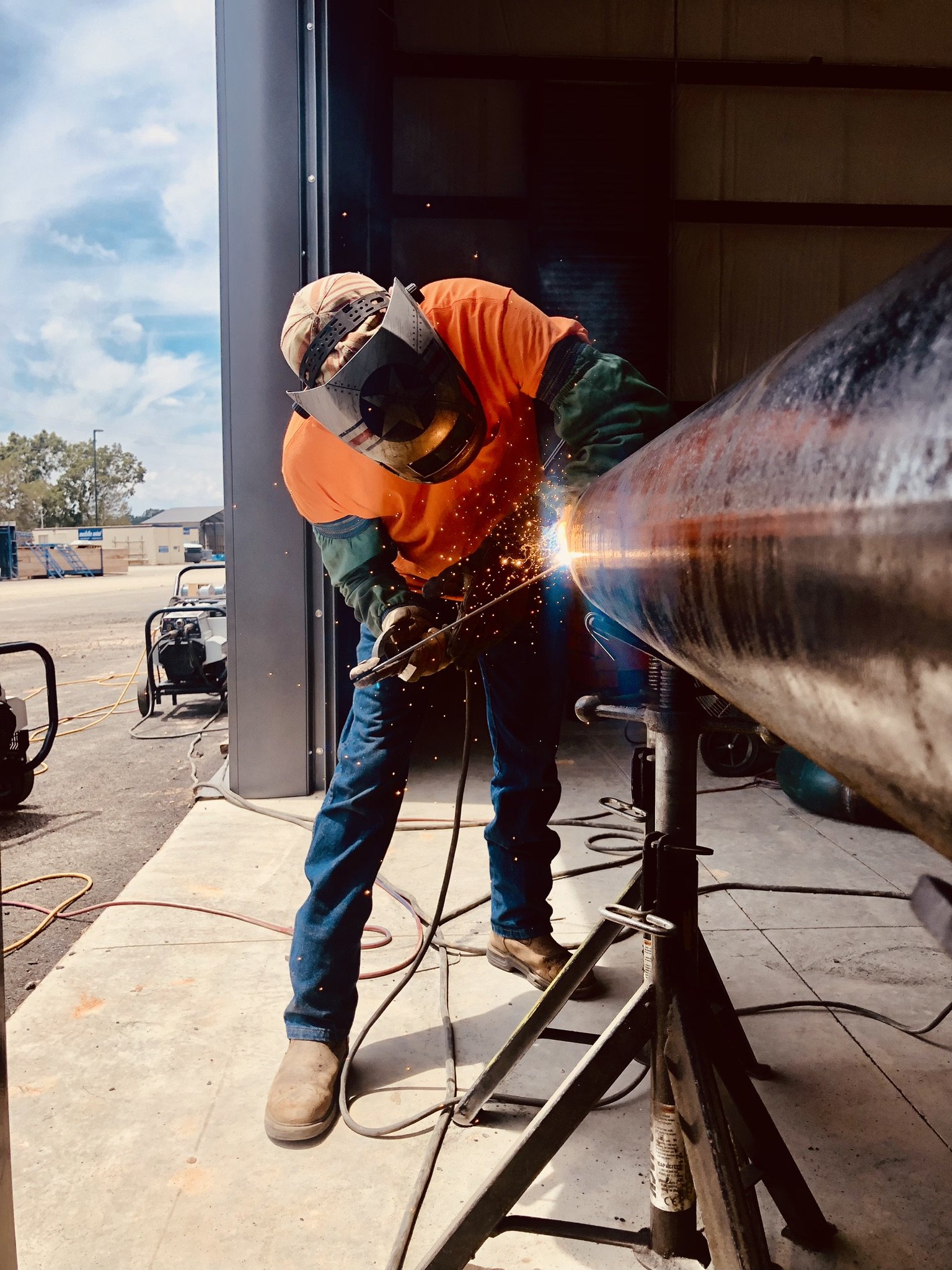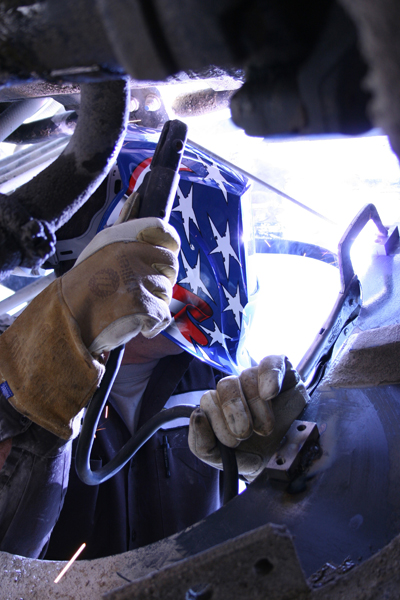Common Welding Fixing Issues and Exactly How to Address Them Efficiently
Welding repair work often come across a range of concerns that can endanger the stability of the end product. Common troubles consist of poor penetration, porosity, and imbalance, among others. Each defect presents one-of-a-kind challenges that need specific techniques for resolution. Understanding these problems is crucial for welders aiming to enhance their results and skills. This conversation will certainly check out these typical welding repair problems and reliable techniques to resolve them.
Poor Infiltration
Insufficient infiltration takes place when the weld steel stops working to fully fuse with the base product, causing weak joints and possible architectural failures. This issue frequently originates from insufficient heat input, inaccurate electrode angle, or incorrect welding speed. Welders might run into poor infiltration due to a miscalculation of the necessary criteria for a specific material thickness or type. Additionally, contamination on the base product's surface area can impede effective bonding, worsening the problem. To address insufficient infiltration, welders need to guarantee suitable settings on their devices and maintain a tidy job surface area. Regular inspection of welds is suggested to determine any deficiencies early, allowing for prompt modifications and the prevention of jeopardized structural stability in bonded settings up.
Porosity
Porosity is a common defect in bonded joints that materializes as small gas bubbles caught within the weld metal. This issue can jeopardize the stability of the weld, resulting in decreased strength and potential failure under stress. Montana Mobile Welding and Repair Belgrade Fabrication. Porosity generally arises from contamination, wetness, or inappropriate welding techniques, which permit gases to run away into the liquified weld pool. To address porosity, welders must assure proper surface prep work, keep a clean workplace, and make use of ideal welding criteria. Additionally, picking the appropriate filler material and securing gas can reduce gas entrapment. Normal assessment and testing of welds can aid identify porosity early, ensuring prompt corrective activities are taken, therefore preserving the quality and dependability of the bonded framework
Misalignment
Imbalance in welding can arise from numerous aspects, consisting of incorrect configuration and thermal expansion. Comprehending the origin triggers is vital for efficient resolution. A number of correction techniques are readily available to realign elements and assure structural honesty.
Root causes of Imbalance
Welding misalignment usually originates from a variety of underlying issues that can endanger architectural stability. One primary cause is incorrect fit-up of elements before welding, which can lead to voids and unequal surface areas. Variants in thermal expansion throughout the welding procedure can additionally lead to distortion, especially if the products being joined have different coefficients of development. Furthermore, inadequate clamping and fixturing may fall short to hold parts securely in location, bring about movement throughout welding. Inadequately conserved tools, including welding makers and tools, may introduce incongruities in the weld grain, more adding to imbalance. Driver mistake, stemming from not enough training or experience, can also play a considerable role in producing misaligned welds.

Modification Strategies Offered
Addressing imbalance effectively requires a combination of restorative techniques customized to the certain problems available. One typical method is making use of jigs or fixtures to hold parts in the appropriate position throughout welding, making certain constant positioning. Additionally, pre-heating the products can help lower distortion and improve fit-up. For significant misalignment, mechanical adjustment strategies, such as making use of hydraulic jacks or clamps, can be used to remedy the setting prior to welding. Post-weld warm treatment may also be essential to ease tensions caused by imbalance. Lastly, cautious examination and adjustment during the arrangement phase can avoid misalignment issues from ending up being significant issues, advertising a smoother welding procedure and enhancing general architectural stability.
Distortion
Distortion is a typical challenge in welding that can emerge from numerous aspects, including uneven cooling and heating. Understanding the reasons for distortion is vital for executing effective prevention strategies. Resolving this problem not only enhances structural honesty but also enhances the overall quality of the weld.
Reasons for Distortion
When based on the intense warm of welding, products frequently go through adjustments that can result in distortion. This phenomenon mainly develops from thermal growth and contraction during the welding process. As the weld location warms up, the product expands; upon air conditioning, it gets, which can develop internal stresses. Additionally, irregular heating throughout a work surface can aggravate these tensions, causing warping or flexing. The kind of material likewise plays a significant role; steels with differing thermal conductivity and coefficients of expansion may react differently, leading to unpredictable distortions. In addition, click here to find out more poor joint design and insufficient fixturing can contribute to misalignment during welding, raising the chance of distortion. Recognizing these reasons is crucial for effective welding repair work and avoidance approaches.
Avoidance Techniques
Reliable prevention techniques for distortion throughout welding emphasis on regulating warm input and guaranteeing correct joint design. Maintaining a consistent warm input aids to minimize thermal expansion and contraction, which can bring about distortion. Utilizing strategies such as preheating the work surface can likewise lower the temperature slope, promoting uniform heating. In addition, choosing suitable joint layouts, such as T-joints or lap joints, can enhance security and reduce stress focus. Applying proper fixturing to protect the workpieces in place further aids in keeping alignment during the welding procedure. Ultimately, staggered welding series can distribute warmth much more evenly, avoiding localized distortion. By using these approaches, welders can substantially decrease the possibility of distortion and enhance the overall top quality of their welds.
Splitting
Splitting is a common concern run into in welding fixings, usually resulting from different aspects such as inappropriate air conditioning prices, product selection, or poor joint prep work. The occurrence of splits can greatly compromise the honesty of the weld, resulting in prospective failures throughout operation. To address this issue, welders need to initially examine the root triggers, making sure that products work and suitably selected for the particular application. Additionally, controlling the cooling rate during the welding process is vital; quick air conditioning can cause stress and lead to breaking. Proper joint layout and preparation likewise contribute to minimizing the danger. Implementing these techniques can boost weld quality and toughness, inevitably minimizing the chance of breaking in finished weldments.

Insufficient Blend
A considerable concern in welding fixings is incomplete blend, which happens when the weld metal does not sufficiently bond with the base product or previous weld passes - Welding. This flaw can lead to weak points in the joint, possibly endangering the honesty of the welded structure. Factors adding to incomplete blend consist of not enough warm input, improper welding technique, and contamination of the surfaces being signed up with. To resolve this problem properly, welders need to assure appropriate pre-weld cleaning and surface preparation, in addition to readjust their welding specifications to attain adequate penetration and fusion. Routine evaluation during the welding process can likewise assist recognize incomplete blend early, enabling prompt corrective procedures to improve the total top quality of the weld
Overheating
While welding repair services can boost architectural stability, overheating offers a considerable difficulty that can bring about material destruction. Too much warm during welding can change the mechanical homes of steels, causing minimized stamina, increased brittleness, and bending. This sensation is especially critical in high-stress applications where architectural dependability is paramount. Determining getting too hot can entail visual evaluations for staining or distortion, along with keeping an eye on temperature throughout the welding procedure. To minimize the threats associated with getting too hot, welders need to utilize suitable strategies, such as managing warmth input, changing traveling rate, and utilizing ideal filler materials. Additionally, carrying out pre- and post-weld heat therapies can aid recover material properties welding tanks and enhance the total high quality of the repair work, guaranteeing long-term efficiency and safety.
Frequently Asked Questions
What Are the Common Signs of a Welding Problem?

Just How Can I Evaluate My Welds for Top quality?
To evaluate welds for high quality, one can make use of visual assessments, ultrasonic screening, and radiographic methods. Each technique guarantees structural honesty, recognizes flaws, and verifies adherence to defined criteria, inevitably improving the integrity of the welded joints.
What Safety and security Safety Measures Should I Take While Welding?
When welding, one ought to prioritize security by wearing proper personal protective tools, making sure proper more information air flow, protecting combustible products away, preserving a tidy work area, and being mindful of environments to avoid accidents and injuries.
Can I Fix a Weld Without Redoing the Entire Joint?
Fixing a weld without redoing the whole joint is possible, depending upon the damage (Montana Mobile Welding and Repair Fabrication). Strategies such as grinding, adding filler material, or making use of a welding process can effectively deal with certain flaws while preserving the surrounding structure
What Devices Are Vital for Effective Welding Repair Works?
Crucial tools for efficient welding repair work consist of a welding machine, cord brush, mill, protective equipment, clamps, and filler products. Each device plays a crucial role in guaranteeing quality and security throughout the repair procedure. Porosity normally occurs from contamination, dampness, or incorrect welding methods, which enable gases to get away into the molten weld swimming pool. Inadequately maintained tools, including welding makers and tools, may present incongruities in the weld grain, more contributing to imbalance. When subjected to the intense warmth of welding, products typically undertake changes that can lead to distortion. Fracturing is a typical issue experienced in welding repair work, frequently resulting from various aspects such as incorrect cooling rates, product choice, or insufficient joint preparation. A substantial problem in welding repairs is insufficient combination, which happens when the weld steel does not adequately bond with the base material or previous weld passes.